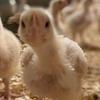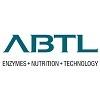Explore all the information on
Poultry welfare
Proper animal welfare involves providing the proper housing, management, nutrition, disease prevention and treatment, responsible care, humane handling and, when necessary, humane euthanasia. These factors allow for the most optimal and humane growing environment. The concept of animal welfare includes three elements: the bird’s normal biological functioning, its emotional state and its ability to express its natural behaviors. Improving animal welfare can be accomplished through offerings like poultry feed enrichment, which can reduce stress, thereby increasing performance, productivity and profitability. Animal welfare is currently a major requirement for intensive poultry production. Beak trimming, stocking density, free access to feed, heat stress, and air pollutants became important issues, which are regulated in several countries. Animal welfare is observed by watching how birds naturally behave and even by looking at mortality stemming from aggressive behaviors.
Ricardo R. Guerra, Ventilation Expert at Cargill, points out the main points of his conference about Environmental Control (EC ) in Poultry India 2025 ...
Comments : 0
Recommendations: 0
Introduction Dorsal cranial myopathy (DCM) is characterized by muscular changes, including degenerative and multiphasic lesions that specifically affect the anterior Latissimus dorsi (ALD) muscle in chickens, a superficial, bilateral muscle located in the dorsal region of the wings, which functions as an abductor of the humerus and wings [1–4]. Macroscopically, the ALD muscle region affected by DCM shows yellow, odorless, gelatinous edema under the skin [5,6]. The muscle...
Comments : 0
Recommendations: 0
Mycotoxins are known to decrease health and performance in poultry production. Their modes of action, such as reducing protein synthesis and promoting oxidative stress and apoptosis, lead to cell destruction and lower cell replacement, affecting several organs and tissues. When different stress factors collude, such as high temperatures and humidity, poor ventilation, high stocking density, and management events, the effects of in-feed mycotoxins can reach a higher level, which may...
Comments : 2
Recommendations: 0
Litter management is a cornerstone of sustainable poultry production, directly impacting bird health, environmental safety, and community acceptance. Among the many challenges faced by poultry producers, fly infestation and persistent odour remain the most difficult to control....
Comments : 2
Recommendations: 2
1. Introduction
Stress, a response to adverse stimuli, is difficult to define and understand because of its nebulous perception. According to Selye [1], “stress is the nonspecific response of the body to any demand”, whereas stressor can be defined as “an agent that produces stress at any time”. Therefore, stress represents the reaction of the animal organism (i.e., a...
Comments : 5
Recommendations: 10
Mike Persia (Virginia Tech) talks about the benefits of Direct-Fed Microbials (also Sulfur Amino Acid supplementation) to help manage the adverse effects of heat stress, in this interview during IPPE 2023 in Atlanta, USA....
Comments : 69
Recommendations: 9
In the rearing aviary, day-old chicks must have easy access to feed and water. The environment should offer an optimal temperature, appropriate lighting, and good ventilation. These conditions ensure that the chicks grow well, and their fluff transforms into well-developed feathers. As the chicks...
Comments : 0
Recommendations: 0
I. INTRODUCTION Alternative rearing systems are becoming increasingly important mainly because of growing public concerns about intensive systems. Regulations have been established in some countries to restrict or ban the use of conventional systems. The European Union banned the use of conventional battery cage systems in 2012 and alternatively, new enriched colony cages, free range production systems or barn systems have been introduced as substitutes (Leinonen et al., 2014). As a...
Comments : 0
Recommendations: 0
Public consultation is due for completion in February on the next animal welfare standards and guidelines for the poultry industry. Practically and importantly, these new standards and guidelines will take the industry from a voluntary specification based model code, to an outcomes-based set of legally enforceable standards. For farmers, this is a paradigm shift. We’ve traditionally supported voluntary codes whilst making a commitment to the community that we will always improve. At...
Comments : 0
Recommendations: 0
Hens using the outdoor range display better plumage condition suggesting lower incidence of injurious feather pecking (Chielo et al. 2016; Rodriguez-Aurrekoetxea and Estevez 2016). However, ensuring that the majority of the flock utilizes the range has been difficult. Therefore strategies such as range enrichment are required to induce more birds to use the range and encourage natural behaviour. An uncontrolled observational study was conducted in South Australia on two commercial...
Comments : 0
Recommendations: 0
The environment in which a laying hen is reared can have long-term impacts on their behaviour, health and welfare later in life (Janczak and Riber, 2015). Alternative housing systems for layers provide access to larger areas and allow greater expression of behavioural repertoires, leading to positive acceptance by consumers. But the complexities of alternative systems can also place greater physical and behavioural demands on the birds, leading to increases in skeletal injuries or inter-bird...
Comments : 0
Recommendations: 0
The composition of gastrointestinal microbiota has been demonstrated to affect behaviour and vice versa (Neufeld et al., 2011; Berthoud, 2008). In free-range laying hens, the individual preference to range can lead to characteristic sub-populations of the flock (Hinch & Lee, 2011). The purpose of this study was to investigate the impact of ranging behaviour on caecal microbiota in laying hens. A flock of sixty ISA Brown laying hens was housed in the UNE research facilities with...
Comments : 0
Recommendations: 0
I. INTRODUCTION It has been shown that FP occurs in all housing systems, from conventional cages, to barn and free range systems (Green et al., 2000). However, there is a lack of data available on the true prevalence of FP in commercial free-range layer farms in Australia. In a survey in the UK, 65% of flocks showed FP during lay as reported by free-range farmers but, when the same flocks were assessed by researchers, prevalence reached 89% and 69% at 25 weeks, and 73% and 86% at 40...
Comments : 0
Recommendations: 0
I. INTRODUCTION The Australian commercial chicken industry is experiencing major changes; a significant proportion of both meat and layer farm types are becoming free range and this is driven by consumer demand (ACMF 2011; AECL 2015). Amongst industry experts, there is concern the risk of disease introduction and spread in Australian commercial chicken farms will be raised from the increased potential of interactions between wildlife and commercial chickens on free range farms (Scott...
Comments : 0
Recommendations: 0


APIs and Vitamin MARKET - The weak demand for the APIs
Suggested link
I. INTRODUCTION Australia is highly urbanized, with 80% of people living in the major cities (Australian Government Department of Infrastructure and Regional Development, 2015) and, although Australians believe that farmers do a good job of looking after their animals (Cockfield & Botterill, 2012), there are low levels of agricultural knowledge among the general public (Worsley et al., 2015). Egg production has become increasingly prominent in public discussions of farm animal...
Comments : 0
Recommendations: 0
I. INTRODUCTION Mineralization of the chicken embryo requires calcium (Ca) and phosphorus (P)’ macro minerals supplied to the embryo by eggshell + yolk and yolk, respectively. Towards the end of incubation and after hatch, phosphorus in the residual egg yolk is minimal (Li et al., 2014). Yolk calcium reserves at hatch, however, are similar (Yair and Uni 2011) or even higher (Richards and Packard 1996) compared to eggs at setting, as a result of eggshell calcium being...
Comments : 0
Recommendations: 0
by Benjamin Geist
With just over 120 days until APSS 2026, planning for the 37th annual Australian Poultry Science Symposium is progressing smoothly. Next year’s event will return to the University of Sydney Business School – Belinda Hutchinson Building (H70) on the Camperdown Campus, and we’re excited to once again welcome delegates for 2.5 days of presentations, posters, networking, and industry engagement.
The theme for APSS 2026...
Comments : 0
Recommendations: 0
Reviews made on the impact of intermittent lighting (IL) on broiler performance (Buyse et al., 1996; Rodrigues and Choct, 2017) attest to the consistency of such lighting programs in achieving better feed conversion rates. So far, no research has been conducted to assess the impact of IL on the susceptibility to and recovery from infectious diseases. We hypothesized that an IL program would increase broiler resilience to necrotic enteritis (NE). In order to test this hypothesis, a 2 x 2...
Comments : 0
Recommendations: 0
Footpad dermatitis (FPD) is considered an animal welfare issue. Wet and sticky litter are major causes of FPD (Taira et al., 2014). Our previous study showed that a well selected probiotic strain Bacillus subtilis 29784 can improve broiler performance by modulating intestinal microbiota and intestinal inflammatory status (Ghane et al., 2017; Jacquier et al., 2016). We hypothesize that the previous demonstrated benefits of B. subtilis 29784 on gut health will improve litter quality and may...
Comments : 0
Recommendations: 0
Backyard chicken-keeping can be a rewarding experience, but it's essential to be aware of the common causes of mortality in backyard chickens and take steps to prevent them. Here are some of the most common causes of mortality and tips on how to prevent them: 1. Predation - *Causes*: Foxes, coyotes, raccoons, hawks, owls, and other predators - *Prevention*: - Secure coop and run with strong wire mesh and sturdy locks - Cover windows and vents with...
Comments : 0
Recommendations: 0














.jpg&w=3840&q=75)


.jpg&w=3840&q=75)
















